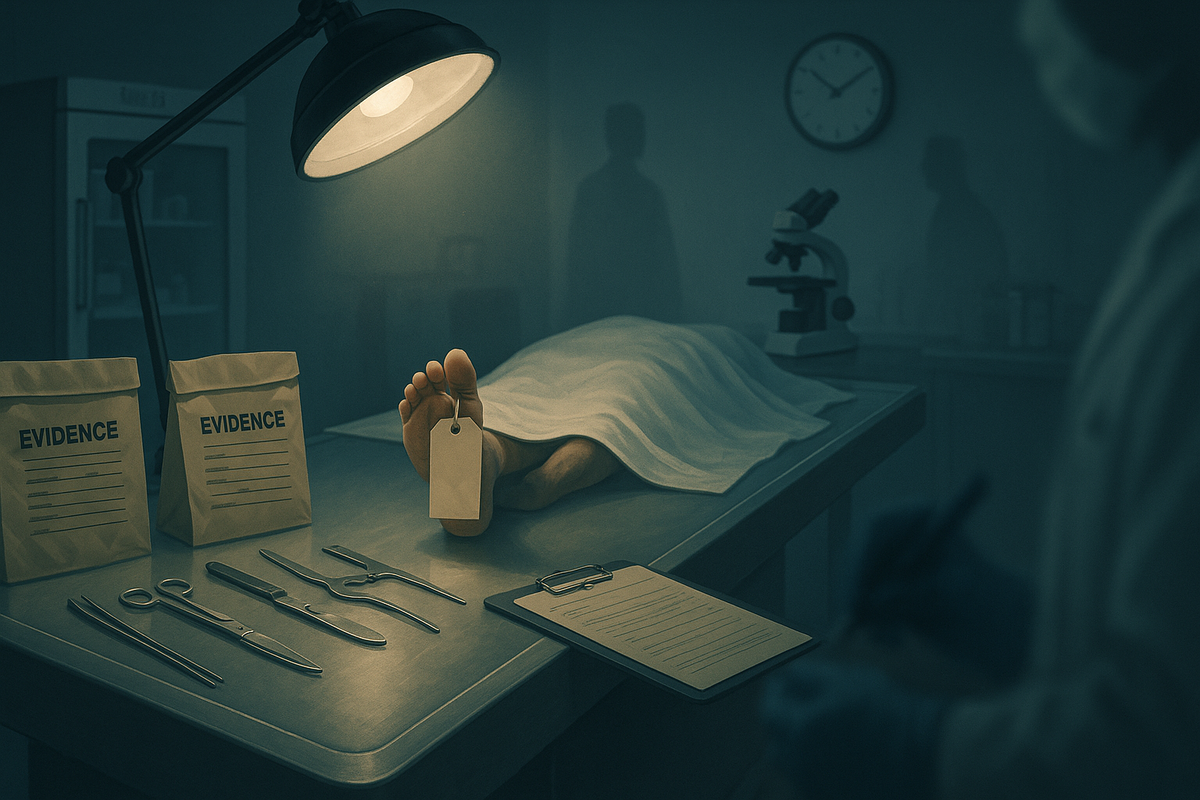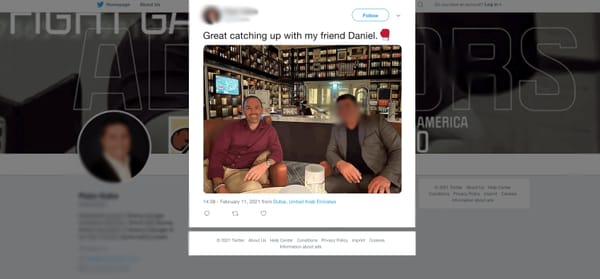How Forensic Medicine Affects Trust

Deep State - Function Layer
When investors size up a country, they check taxes, laws, and reputation. Beneath all that runs a quieter layer of state capacity: forensic medicine - invisible when it works, headline - making when it doesn’t.
Sunday Night on Level 14
She doesn’t show for the Monday team meeting. Her neighbor is called up for a check. The door is unlocked - not unusual here; the country has a long legacy of safety and people trust the building’s security.
She’s on the sofa. A wine glass with a clean print on the rim. A second glass rinsed and drying. A faint line at the neck that a forensic pathologist will read better than the room. No shattered glass. No signs of a fight. Her wrists and ankles are tied, and a plastic bag is carefully sealed over her face.
That’s enough. Tape goes up. The scene is cordoned and a case ID is assigned. From that moment, every photo, swab, and note lands under the number. Crime scene officers work the grid: entryway, hall, living room; close-ups on the neck and the chair leg. They dust and swab - prints and DNA from multiple points on and around the body.
A neighbor reports a thud around ten. Another saw no visitors. The building’s cameras show her returning alone with groceries. Several visitors come and go - faces under caps and hoods, the cameras yielding only low-quality images. One hooded figure draws attention.
To a street - savvy investigator with limited training, the picture reads one way: homicide - easy entry, quiet violence, staged calm after.
The Quick Call at the Mortuary
The body goes to the mortuary.The pathologist leans on experience, intuition, and a first - responder summary stamped homicide.
Cause of death: asphyxia by plastic-bag suffocation.Manner: homicide.
The lab hits: DNA under the nails matches the victim’s partner - a rising F&B entrepreneur, new in - country, roughly the build of the hooded figure on the grainy lobby footage. Detectives sketch the arc: he left his phone at home, went over, did it, slipped back. It plays clean. Too clean.
HR issues condolences. The group life insurer receives a “complete” file and - under prompt - payment rules - approves the benefit. The payout is fast, tidy, and - everyone assumes - compassionate.
What’s Already Broken
By the time the mortuary call goes out, the employer has issued condolences and gone quiet; managers field panic, a candidate withdraws, staff psychological - safety support is deployed, and PR is on retainer. The life insurer wires the benefit on a “complete” homicide file. The partner’s small F&B brand hits friction: a buyer pauses the launch, a lender opens enhanced due diligence, a supplier demands cash up front.
For the host country, the first headlines bend the narrative: a “safe city” now linked to a violent death. The suspect’s embassy requests a formal casework briefing. It’s not a verdict - just an early signal that outsiders are watching how the case is handled.
Table Flips
The suspect’s home country reviews the case and starts with the basics: How did his DNA get under her nails? They map innocent transfer - daily contact, romantic relationship - innocent routes the first report never considered.
They turn to the ties. No one tested whether the wrists could have been tied by the victim - no check for easy-release loops, reach, or basic knot logic. The gap is noted. And underlined.
The pathology report read like a verdict memo - manner: homicide - but offered no discriminator separating homicide from a staged suicide by plastic-bag asphyxia.
Context check. In the literature, plastic-bag suffocation most commonly appears in suicides, with homicides comparatively rare and demanding careful discrimination of scene features (intrusion, self-application feasibility, toxicology).
Toxicology? Codeine positive, but the clock ran out on quantification. impossible to say whether the concentration edged toward toxic - information that could have mattered for intent and capacity.
The hooded figure on CCTV stays a shadow - poor images, no ID.
Prosecutors read the review and step back. Not enough to indict. Months later, the court follows the facts to their end: the partner is exonerated. The science didn’t prove a murder; uncertainty takes the wheel.
Consequences, Now
The employer feels the air change first: fear in team chats, a doubt about culture, and the uneasy question of whether they spoke too soon. The life insurer feels the clock - legal deadlines on one side, a file that suddenly looks provisional on the other - knowing a compassionate payment can become a costly error. The formerly suspected partner fights to steady the business: buyers go quiet, a lender’s “routine” questions aren’t routine, a supplier tightens terms. The host country feels the spotlight shift from “transparent government” to “can we trust your evidence.”
Not one crisis - two: trust and time.
Trust.The first story was too sure of itself. Credibility cracks. Inside the company, staff want facts, not tone; candidates hesitate. For the insurer, beneficiaries and counsel test the method, not the motive. For the partner’s firm, counterparties treat it as headline risk until proof says otherwise. For the state, the question moves from image to method: what standards, what timelines, who oversees investigations? Investors add a line to the brief: evidence - chain risk. Trust shows up as doubt, follow-up questions, and tougher terms.
Time.Clocks don’t stop: prompt-payment windows, rumor cycles, cash conversion, forensic turnarounds. Miss them and cost compounds. Meet them with guardrails and you cap the damage. Time, here, is concrete: the partner’s business hits a cash squeeze as purchase orders pause; the insurer watches recovery chances fade and legal costs rise with every week the file stays unresolved; and a missed toxicology milestone forces embassies to delay briefings and an investor to delay due diligence.
Evidence Is Infrastructure
This story isn’t about crime - it’s about the corporate risk of death investigation. When the investigation is thin, the living are left without reliable answers and the dead without a fair voice. Markets follow that human failure. Death-investigation capability belongs in due diligence for any serious view of state duty of care: it decides whether a loss becomes a responsibly established truth or an open wound.
For governments, that means accredited labs, validated methods, routine proficiency testing, audited chain-of-custody, independent peer review in complex or equivocal deaths, timely broad toxicology with sample retention, and state-of-the-art training and continuing education for forensic practitioners. These are the quiet guarantees that reliability outruns rumor.
None of this is about saving money when people die; it’s about honouring people by refusing pseudo-scientific investigations. Strong forensic medicine protects more than cases - it protects trust. And trust is the ground on which both human life and economic prosperity stand.
USE OF AI:
Cover Image generated by ChatGPT (OpenAI).
Some of the general text and sentence structures were produced by ChatGPT (OpenAI).
All content is verified and edited by the author.



